Five stories, five drivers and five life-threatening situations. All five drivers have continued their career after a major accident. All five have won Grands Prix after their accident. Three of the five drivers even became world champions. F1Today looks at their comebacks after the serious crashes that went on to shape and define their careers.
Junior career
Niki Lauda wasn't a born race car driver. Lauda, born into a fairly wealthy family, was raised by parents who were against car racing. After he started driving in Mini's he switched to the world of single seaters and ended up in Formula 2 via Formula Vee and Sportscars. For the Formula 2 championship, he had to take out a loan of £30,000, guaranteed from his life insurance. Lauda joined March in 1971 and he made his debut in Germany at Hockenheim circuit in a March 712M. On Saturday, April 3rd, 1971, he qualified fourteenth for the first round of the season, almost two and a half seconds slower than pole-sitter Ronnie Peterson. In fact, Lauda was just a bit clumsy. The Austrian bagged eight points during his first season and was on the podium in Rouen. It should be noted that Formula 2 was a very competitive class at that time. In any case, it was much different than the current Formula 2 standards.
 His F2 campaign went better in his second year. With three podium places, Lauda took the fifth place in the championship. In the meantime he drove a full season in Formula 1 in addition to his work in Formula 2, which did not go unnoticed as BRM offered him a contract for 1973. During the Belgian Grand Prix at Zolder, Lauda scored his first points with a fifth-place finish. Ferrari reorganised after a dramatic 1973 and came out determined to recruit Lauda. Luca di Montezemolo offered Lauda a contract and the Austrian signed.
His F2 campaign went better in his second year. With three podium places, Lauda took the fifth place in the championship. In the meantime he drove a full season in Formula 1 in addition to his work in Formula 2, which did not go unnoticed as BRM offered him a contract for 1973. During the Belgian Grand Prix at Zolder, Lauda scored his first points with a fifth-place finish. Ferrari reorganised after a dramatic 1973 and came out determined to recruit Lauda. Luca di Montezemolo offered Lauda a contract and the Austrian signed.
Starting at Ferrari
From the first moments at the Scuderia, Lauda showed that he was fast. A second place during the Grand Prix of Argentina was followed by a victory during the first European race of the season in Jarama. After starting from pole position, Lauda drove away from the entire field with his Ferrari 312B3-74, including teammate Clay Regazzoni. World champion-elect Emerson Fittipaldi was even put a lap down during the race. Lauda set the tone for the rest of the season. He was the fastest driver, had no problems with teammate Regazzoni, but due to mechanical bad luck and consistent mistakes, the Austrian only won once more at the Zandvoort race.
In the first year for the Italian-squad, he finished fourth in the championship with 38 points. In 1975, Ferrari started the season with the 1974 car. After the switch in South Africa to the Ferrari 312T there was no stopping Lauda. The Ferrari driver was crowned world champion after bagging 64.5 points. Before 1976, Lauda was confronted by another challenger, James Hunt. Hunt was the opposite of Lauda. Where Lauda performed everything through the pragmatic method, Hunt was more of a playboy and a party-animal. During the 1976 season, the drivers met regularly on the track, which always happened fair-and-square. Lauda gathered eight podiums (five wins) in the first nine races of the season. After the British Grand Prix, he was 23 points ahead of Hunt who drove for McLaren.
The run-up to the German Grand Prix of 1976
The extreme length of the old Nürburgring caused a fierce debate in the run-up to the race the 1st August 1976. The track needed five times more marshals and doctors to ensure the safety of the drivers. Lauda decided to call a meeting in the weeks before the race. Lauda did not want the race under the dangerous conditions. According to Lauda, the standards were so poor that it was not safe to start the race. F1 therefore also decided that the German Grand Prix at the Nürburgring of 1976 was the last on this configuration of the track. It was partly because of the difficult location of the track that the German organization could not upgrade the marshal and medical posts. This also includes the 'somewhat inadequate' safety regulations that were used in the seventies. It can not be said that the sport was amateurish in the seventies. On the contrary, the sport was extremely professional for that time. Nevertheless, the track was narrow, there were too few runoffs and there were poor escape roads for fire services. Lauda worried about the corners that could catapult cars when they crossed the hills near Flugplatz and Pflanzgarten. The weather conditions could also be different at separate locations of the circuit, and there was also a high risk of fog during that period. All of these arguments were cited by Lauda. He was aware that in July, about 3 weeks before the Grand Prix, there had been a fatal accident during a Formula Super-Vee race. Lauda was not impressed by the measures that had been taken. He called for a boycott and held a vote and in the end, there was only one vote in the difference. The race would continue.
The German Grand Prix of 1976
 What Lauda made clear in his statement before the race, the worries became a reality as the event dawned. There were insufficient security people present. The track was half dry, half wet. There was rain before the race, so most cars decided to start on the rain tyre. Jochen Mass, who was well known to be fast around 'The Green Hell', decided to start on slicks. Regazzoni had the best start from fifth position. Polesitter Hunt followed him, Mass was third and Lauda fourth. At the end of the first lap, almost all drivers came in for slicks. At the start of the third lap, Jochen Mass had a gap of almost half a minute on the rest of the field. Lauda was determined to make up the lost time. In an attempt to speed things up, something possibly broke off on the car and hit the wall at Bergwerk. At that moment the Ferrari fuel tank exploded and erupted Lauda into flames. Guy Edwards managed to avoid the burning Ferrari, but Hans Ertl and Brett Lunger t-boned the car head-on. The three mentioned drivers stopped and ran to the car of Lauda. There, they received assistance from Arturo Merzario. By the time he arrived, Lauda already had severe burns. Because of the crash, Lauda had lost his helmet. He had already inhaled very poisonous smoke, which was partly because there was no medical assistance in the area. Lauda had consciousness after the accident, and even tried to stand up when he got out of the car, but soon slipped a coma. Lauda was flown by a helicopter from the Bundeswehr to the hospital in Koblenz and from there he transferred to the Trauma-Klink von Ludwigshaven. This clinic specialized in the treatment of severe burns. In the following days, Lauda fought for his life.
What Lauda made clear in his statement before the race, the worries became a reality as the event dawned. There were insufficient security people present. The track was half dry, half wet. There was rain before the race, so most cars decided to start on the rain tyre. Jochen Mass, who was well known to be fast around 'The Green Hell', decided to start on slicks. Regazzoni had the best start from fifth position. Polesitter Hunt followed him, Mass was third and Lauda fourth. At the end of the first lap, almost all drivers came in for slicks. At the start of the third lap, Jochen Mass had a gap of almost half a minute on the rest of the field. Lauda was determined to make up the lost time. In an attempt to speed things up, something possibly broke off on the car and hit the wall at Bergwerk. At that moment the Ferrari fuel tank exploded and erupted Lauda into flames. Guy Edwards managed to avoid the burning Ferrari, but Hans Ertl and Brett Lunger t-boned the car head-on. The three mentioned drivers stopped and ran to the car of Lauda. There, they received assistance from Arturo Merzario. By the time he arrived, Lauda already had severe burns. Because of the crash, Lauda had lost his helmet. He had already inhaled very poisonous smoke, which was partly because there was no medical assistance in the area. Lauda had consciousness after the accident, and even tried to stand up when he got out of the car, but soon slipped a coma. Lauda was flown by a helicopter from the Bundeswehr to the hospital in Koblenz and from there he transferred to the Trauma-Klink von Ludwigshaven. This clinic specialized in the treatment of severe burns. In the following days, Lauda fought for his life.
The consequences of the crash
Lauda was treated at the Trauma Clinic von Ludwigshaven: "The biggest problem was that they were openly discussing what to do with me, how my physical condition was and what interventions they should make. They said: 'If we give him oxygen, he will die.' I heard everything, I told them later, when Marlene (his wife) came into the room later, I heard her crying. I was very bad, and in the night from Sunday to Monday the pain was really too much for me. I saw myself happily falling back into a dream world, relaxed, and then I got scared, I had to keep going, because if I did not, I would die, it helped me concentrate, I had to know that I was willing to do everything I could to stay alive."
Within five days, Lauda was discharged from the intensive care unit. In the  meantime, Enzo Ferrari was already searching for Lauda's replacement. Emerson Fittipaldi, in search of news about Lauda, was called by Ferrari: "I wanted to know how it was with Niki, I got someone from Ferrari on the phone and they asked me: 'Would you like to drive for us?' I just wanted to visit my friend who was in the hospital." Carlos Reutemann was appointed to replace Lauda in Zandvoort after the team had withdrawn as a protest against Hunt's victory for the Austrian Grand Prix at the Österreichring. In the meantime, Lauda was working on a comeback. Daniel Audetto, team manager at Ferrari, thought it was no more than normal for Ferrari to look for another driver: "It's the hard part of the Formula 1. If a link falls, you'll have to replace that link." Hunt won the Grand Prix of the Netherlands at Zandvoort and therefore was just two points behind Lauda.
meantime, Enzo Ferrari was already searching for Lauda's replacement. Emerson Fittipaldi, in search of news about Lauda, was called by Ferrari: "I wanted to know how it was with Niki, I got someone from Ferrari on the phone and they asked me: 'Would you like to drive for us?' I just wanted to visit my friend who was in the hospital." Carlos Reutemann was appointed to replace Lauda in Zandvoort after the team had withdrawn as a protest against Hunt's victory for the Austrian Grand Prix at the Österreichring. In the meantime, Lauda was working on a comeback. Daniel Audetto, team manager at Ferrari, thought it was no more than normal for Ferrari to look for another driver: "It's the hard part of the Formula 1. If a link falls, you'll have to replace that link." Hunt won the Grand Prix of the Netherlands at Zandvoort and therefore was just two points behind Lauda.
The comeback of the century
After six weeks, Lauda was back in Maranello. Under the eyes of many journalists and fans, Niki stepped into the car, but it was a moment when he would get a panic attack. He later said: "The first day I was in the car after my accident I could not find the second gear because I was too scared that I would not be able to drive. The fear came up in me, I drove a slow lap and got back into the pits, and on Saturday morning I went to Monza, building up everything with laps that were getting faster, and I was the fastest Ferrari." Lauda qualified in fifth. In the meantime, there was a scandal at the Italian circuit. McLaren was questioned by the race officials for smuggling and using illegal oil. Hunt and Mass would start the race from the 27th and 28th place. Hunt eventually spun on the eleventh lap. Lauda drove to fourth place at the home race of Ferrari, behind Peterson, Regazzoni and Laffite. Hunt then took the victories in the North American races of Canada and the United States. Prior to the race at Mosport, Lauda was three points to the good of Hunt as Hunt's victory from Silverstone was stripped. Lauda finished second and thus got the victory. The gap at the start of the last race at the final round in Fuji was three points in favour of Lauda.
Withdraw in Japan and leaving Ferrari
What happened in Japan on October 24th, 1976 is generally well-known among keen historic F1 fans. Lauda chose not to risk his life and retired from the race after two laps amid torrential rain. It proved to be an action that had bad blood, especially from Enzo Ferrari. In retrospect, the statement of Lauda is easy to explain. He later said that he did not feel safe and that it was dangerous to drive under the conditions. After his accident his eyes had become watery because he could not move his eyelids. Lauda opted for safety and parked the Ferrari in a safe spot. Hunt was in the lead for the most part of the race, made a pit stop, fell back, but finally took third place. With that third place, he was able to pass Lauda for the championship. It was clear that Enzo Ferrari was not happy with Lauda, but he was maintained for 1977. The Austrian drove a particularly consistent season that earned him the world title fairly easily. Internally it was rumbling, as Lauda was not pleased with his new teammate Carlos Reutemann. Lauda felt let down by Ferrari: "I could not stand that guy, instead of giving support, they gave me a hard time by putting Reutemann in the team." Lauda decided to leave Ferrari at the end of the year.
Victories with Brabham and third world title with McLaren
Before the start of the 1978 season, Lauda signed with Brabham. He was fourth in the world championship that year with 44 points. The following year turned out to be a disaster season. Lauda and Brabham did not reach great speed and the Austrian driver decided to hang up his helmet during the Canadian Grand Prix weekend. Eventually, Lauda returned to Formula 1 in 1982 to race for McLaren. This combination earned him his third world title in 1984. After the 1985 season Lauda stopped with Formula 1 for good. He went to focus on his airline company named Lauda Air which he had founded in 1979. In 1991 Lauda was again faced with a big challenge. One of his plans, a Boeing 767-300ER with the name Wolfgang Amadeus Mozart, crashed in Thailand and killed 223 people. Lauda Air Flight 004 was investigated by the Thai Department of Aviation. Niki Lauda was present every minute of the day at the time of the investigation to determine exactly what had happened. Lauda later stated that the period after this accident was the most difficult part of his life. More difficult than that period after his crash in Germany. Lauda got a second chance after that frightening incident, and he took it with both hands. From a personal point of view, I hope that Niki Lauda, who looked death in the eyes a few months ago after lung transplantation, is back in the garage with Mercedes in Melbourne. And then I will once again look at him with admiration because it will mark number three. Gute Besserung Niki! Bis bald!

 0
0












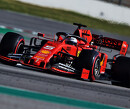
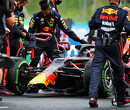
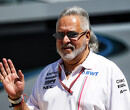
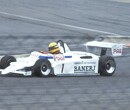
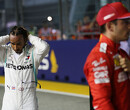


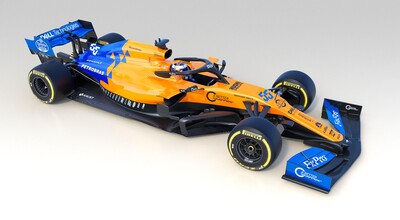


Replies (0)
Login to reply